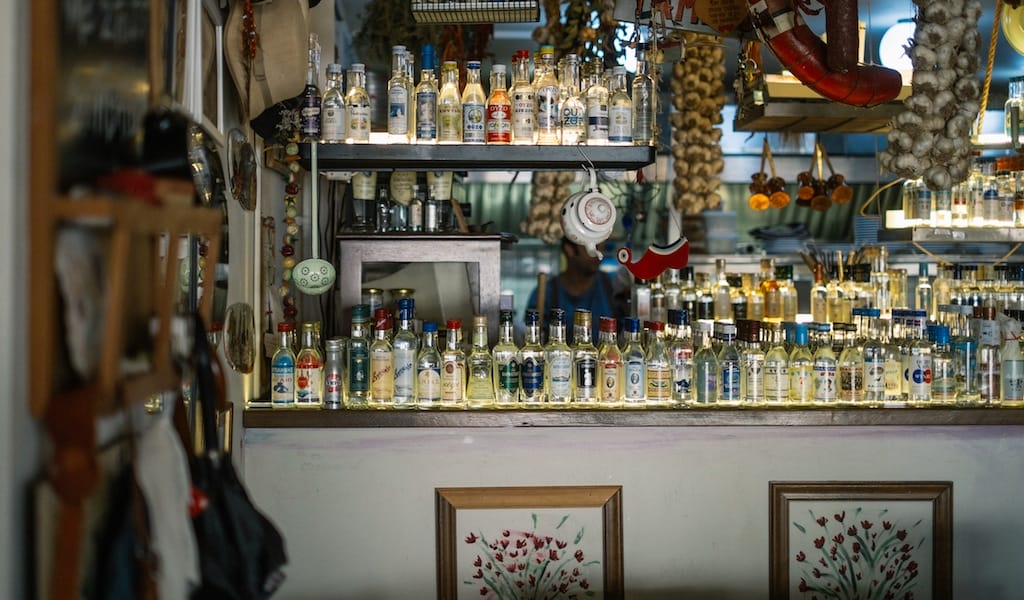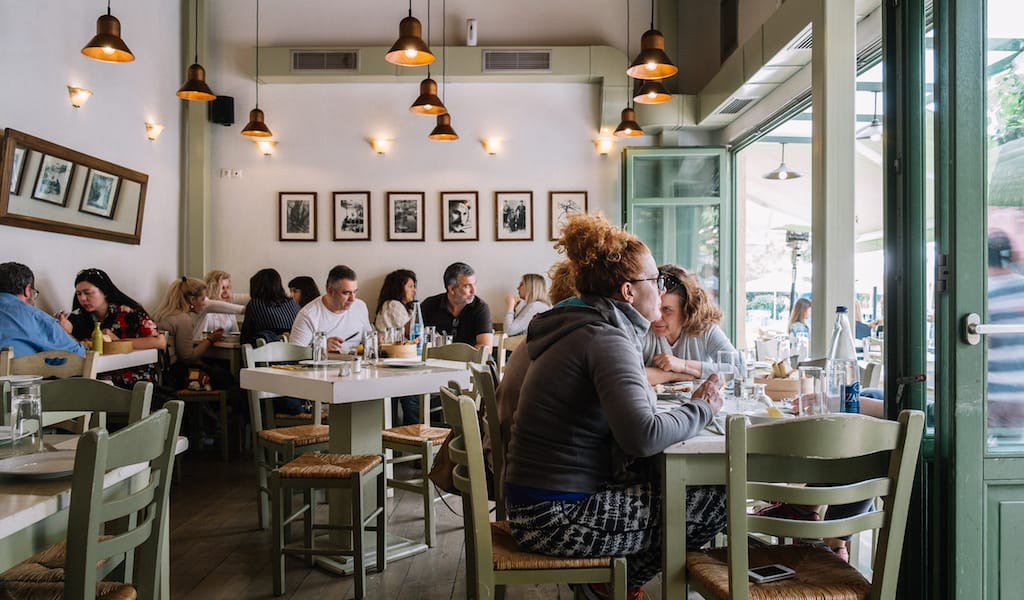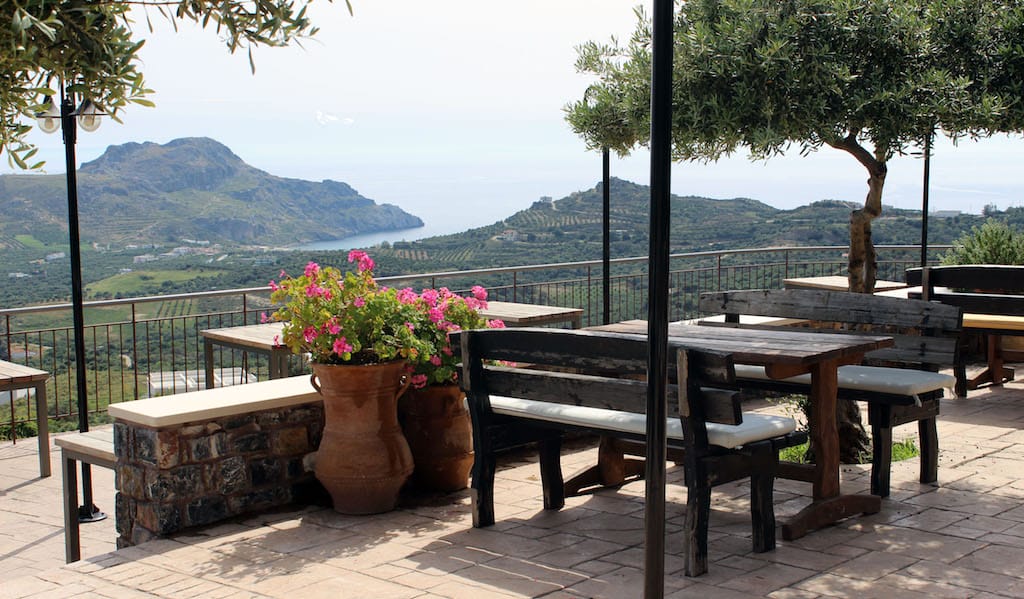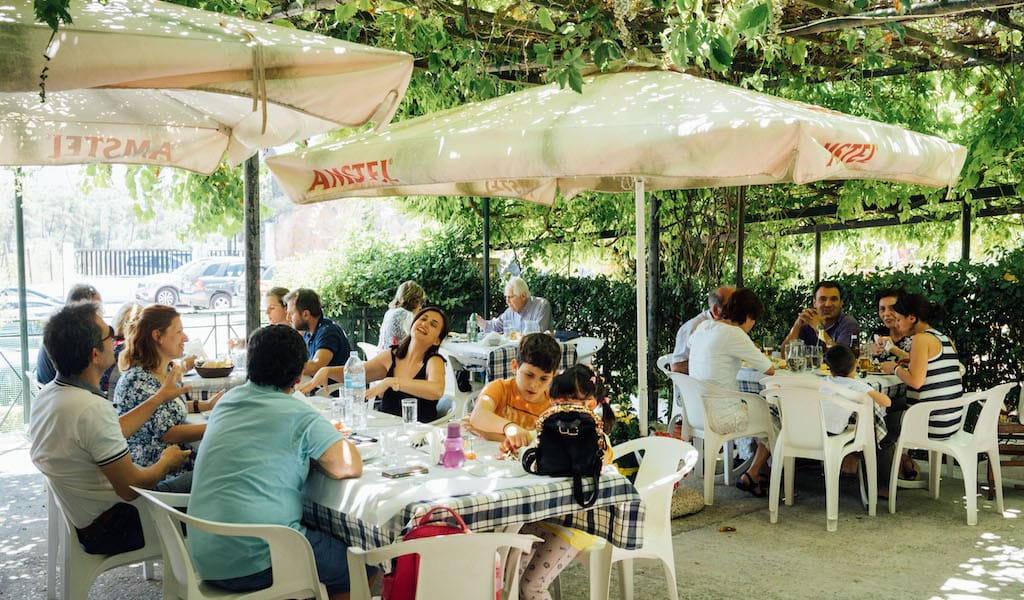When we first discovered this delightful ouzeri in Neo Psychiko last May, we were thrilled to have found a place that specialized in Politiki Kouzina – not the cooking up of politics but the cuisine of Constantinople, often called simply I Poli, or The City, by Greeks even today.
Ironically, mutual friends had chosen it to fete a Turkish guest, a visitor from Istanbul, which seemed a culinary version of taking coals to Newcastle. But she pronounced the fare delicious, and smacked her lips over such shared dishes as Imam Baildi, dolmades and bourekakia made with phyllo.
So imagine our surprise when we returned in the fall only to find a menu devoted to the food of Crete. Equally well prepared, the selections included such signature island specialties as little fried cheese pies, snails seasoned with vinegar and rosemary, wedding pilaf and salads with Crete’s amazing variety of indigenous greens.
By winter the menu had changed again to focus on the big North Aegean islands of Chios, Lesvos, Samos and Limnos – mastiha-scented pastries, sardines, local cheeses and trahana (rustic pasta) – while this spring an even more copious menu brings together delicacies from the Cyclades and Dodecanese. We have already been twice in a vain attempt to sample all of its known and unfamiliar goodies, ranging from Mykonos louza (cured pork loin) to skate salad from Rhodes, parsley “pesto” dip from Syros, tomato keftedes (fritters) from Santorini and home-made pasta with caramelized onions and sitaka (think clotted cream) from tiny remote Kassos.
The menu will change but one thing is constant: Whatever is offered will be utterly delicious.
Thirty years ago, Athens eateries could be divided into categories like fish taverna, grill house, casseroles and baked classics, as well as the occasional restaurant with white linen tablecloths and napkins that aspired to more sophisticated tastes. In the neighborhoods where refugees from Asia Minor had settled, you would find places that catered to their memories. But to enjoy the cooking of the Greek regions you had to travel there.
This pattern has changed to some extent and Cretan restaurants, especially, have sprung up all over the capital, but it is rare indeed to come upon an ouzeri or taverna dedicated to foods of the islands, Macedonia, Epirus or the Peloponnese.

What had inspired the owners of Hohlidaki to undertake such an ambitious project? It turns out that they’ve embarked on a marathon celebration of the restaurant’s 30th anniversary.
As Alexandros Giolmas and his mother, Vanna, explained one Saturday afternoon between meal times, they wanted to give their customers every dish they’d cooked over the years since their opening in 1986, but present them as part of a theme rather than a higgledy-piggledy mix.
“Alexandros was just nine years old when we started, in a small place that looked like a village house in what used to be rural Chalandri,” said Vanna, referring to the northern Athens suburb where the family first planted roots in Greece. “My husband and I, still teenagers, had come with our families as refugees from Constantinople in 1965. The Cyprus affair was brewing and the Turks threw us out. Othellos [my husband] and I both learned to cook from our mothers, grandmothers and aunts.”
We laugh when Vanna tells us that her husband was baptized Othello – the first time we’d heard of a Greek or anyone else for that matter with that name – because his father was reading Shakespeare at the time. “No, he wasn’t dark skinned at all, white complexion and very blue eyes,” she explained.
“Things were very slow in the beginning. We’d find ourselves eating everything we’d cooked for customers who didn’t show up. Until our first Good Friday, when for some reason people crowded in, and from then on, we were busy. We always had some dishes from Constantinople because that’s what we were raised on, but we were also on the lookout for recipes from other parts of Greece.”
Twenty years later, in 2006, Hohlidaki moved from Chalandri to its current spot in more central Neo Psychiko. The family has papered the walls with vintage posters, magazine clippings, Vanna’s flower paintings and old photographs collected over the decades, creating a space that is cozy and familiar. A (working) juke box stands against one wall, a couple of red hammocks hang from the ceiling, and above the entrance but below blown up pictures of Laurel and Hardy and Charlie Chaplin, a row of colored bottles shines like stained glass. These are not for consumption unlike the scores of ouzo bottles lined up on the counter that separates the dining area from the kitchen.

Anyone interested in tasting the ouzos from all over Greece or matching them with dishes from the same areas can choose from among 130 brands. That said, wine drinkers will not be disappointed with the house white, rose and red, though the wine list cannot compete with the ouzos.
Since some of the wines come from Crete, we asked Alexandros and Vanna about the name, Hohlidaki, a Cretan word for little snail quite different from the more common salingari.
Alexandros laughed. “No, there’s no connection with Crete at all, except for our appreciation of its wonderful food. We didn’t have a name for our place when we opened but my fourth-grade reader had a glossary in the back of unusual words, and we decided to pick one of them. Hohlidaki got the most votes.”
Well, Hohlidaki would have our vote no matter what it was called. We look forward to sitting a few more times under the carmine blossoms of bougainvillea that seem to float over the outer dining area in spring and summer and sampling more of the tastes of the Aegean. Come autumn, who knows what further lessons in Greek gastronomy await us? Will it be Macedonia and Thrace, the Peloponnese, Epirus?
Alexandros is doing his homework but he and his mother have not yet made up their minds. The menu will change but one thing is constant: Whatever is offered will be utterly delicious.
 May 15, 2018 Rakaki
May 15, 2018 Rakaki
The neighborhood of Kesariani, built on the lower slopes of Mount Hymettos and located […] Posted in Athens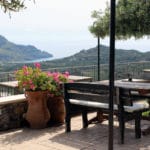 July 26, 2017 CB on the Road
July 26, 2017 CB on the Road
There’s something special about Crete, Greece’s biggest island. The country’s most […] Posted in Athens July 31, 2019 Agroktima Regoukou
July 31, 2019 Agroktima Regoukou
Growing up in Athens in the 1980s and 90s, weekend family excursions to a suburban […] Posted in Athens
Published on July 14, 2017
Related stories
May 15, 2018
AthensThe neighborhood of Kesariani, built on the lower slopes of Mount Hymettos and located around 3 kilometers east of central Athens, has long been a culinary destination, particularly for seafood (even though it’s nowhere near the water). Many of the old seafood restaurants survive to this day although the neighborhood’s offerings have expanded to include…
July 26, 2017
AthensThere’s something special about Crete, Greece’s biggest island. The country’s most fertile region, it has a long history of food and wine production that stretches back to the Bronze Age, making Crete one of the most interesting culinary destinations in Europe. Bordered by the Aegean Sea to the north and the Libyan Sea to the…
July 31, 2019
AthensGrowing up in Athens in the 1980s and 90s, weekend family excursions to a suburban taverna were an integral part of life. Back then, prices were affordable and eating out was not a luxury; in fact, it was a social necessity. It was a way to catch up with friends, enjoy good food and good…







































